Designer Profile: Staffan Tollgård
HOW DID YOU GET STARTED IN INTERIOR DESIGN?
After completing a post-grad degree in interior design at London’s Inchbald School of Design, I worked for a yearat architect/designer Rabih Hage’s studio before setting up on my own in 2005 with a house renovation in Chelsea. Monique then left her job in TV production to do a shorter course at the Inchbald, joining me as a junior interior designer ten years ago.
DESCRIBE YOUR SIGNATURE STYLE
It’s bold without being brash, clean but not minimal, rich in texture or colour, but often not both. I don’t like design thatshouts at you – it’s okay for a restaurant or hotel to turn up the volume, but at home, it gets tired quickly. I like the homes we design to feel calm and tidy, but genuinely lived in.
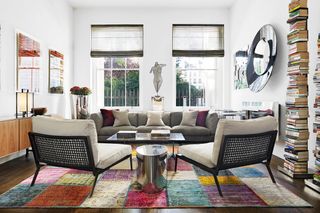
TELL US ABOUT YOUR DESIGN PROCESS...
I start with what I call a ‘red thread’ – like laying a trail of breadcrumbs through a design, it provides a framework for each new project so I stay on track. I look for something important to the client – maybe an heirloom, a piece of art they can’t live without, a collection of objects amassed over time, or even the location of the house (maybe it’s the view or the history of the building) – and use this as the start of the story. It really helps because there are so many great ideas and suppliers to choose from, it can become confusing, so I hold up each new idea against the ‘red thread’ to see if it adds to the story. If it does, I draw it in; if it doesn’t, I let it go.

HOW COULD READERS FIND THEIR‘RED THREAD’?
Be The First To Know
The Livingetc newsletter is your shortcut to the now and the next in home design. Subscribe today to receive a stunning free 200-page book of the best homes from around the world.
Ask friends how they feel when they visit your home – whatstory are you telling with the colours, objects and furniture you use, how do you like to entertain, are you a little chaotic or organised? We can become a bit blind to things we see every day, so friends will see things you’ll not know about yourself.

HOW DO YOU DEVISE A COLOUR PALETTE?
We choose one or two patterned fabrics (maybe for cushions), or look to a rug or piece of art and then draw out a colour link from that – upholstering an armchair or stool in a bold block of colour makes a great contrast to natural materials, such as wood, stone and leather.
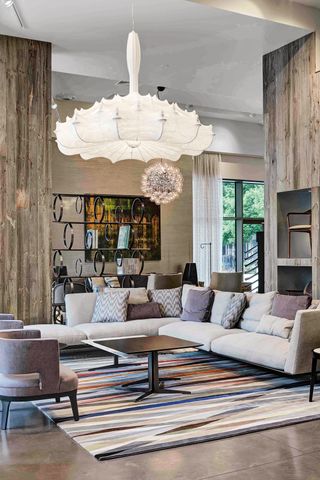
WHAT'S WORTH INVESTING IN?
Look at the big picture to work out what’s most important and spend accordingly – if you spend too much on one thing, you have to compromise on everything else. For example, work with a reasonably priced, pared-back kitchen and spend money on what’s at eye level, such as a really beautiful stone splashback. Going to a stone yard to pick your own slab is like choosing a painting. It will make the kitchen personal, but it’s practical too.

ANY FAVOURITE DESIGN TRICKS?
I like wall cladding – it’s both sound-absorbent and lends texture without needing to use lots of colour. It works on the front doors of furniture too. I like Élitis wallpapers and De Castelli produces great metal for walls. I’ve recentlybeen playing with leather tiles from Alphenberg Leather –the company brushes, colours and then backs real hides to make the tiles all the same thickness before laser-cutting them into perfect tiles.
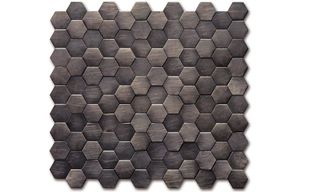
WHAT'S YOUR IDEA OF LUXURY?
Pieces made with great craftsmanship – like Mark Albrecht’ssteel chairs (he’s a former sculptor and they’re the perfect marriage of function and form). I’m as drawn to the material as I am to how many man-hours it takes to make them.
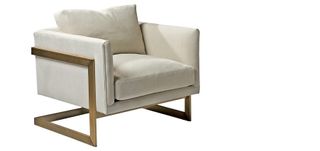
WHAT'S INSPIRING YOU RIGHT NOW?
The timeless lines and quality materials of mid-century design – I like how a Finn Juhl Chieftains armchair still tells a unique story in a modern setting. The sophisticated coolness of Milo Baughman’s designs are being broughtback into production by Thayer Coggin and still made exactly the same way they were 50 years ago. Angelo Mangiarotti’s stone tables are like functional sculptures, while Apparatus uses vintage lighting components in beautiful materials, including metal, leather, glass and marble. We are big fans.

WHAT ARE YOUR CURRENT PROJECTS?
We’re working on some family homes in Jordan and the Algarve, mixing old with new, and a bold project in Riyadh with very few internal doors and views through the house, which is quite counter-cultural there. I’m also involved ina capsule furniture collection, combining solid wood with a very 21st-century aesthetic for an Italian manufacturer, and lighting for Contardi.
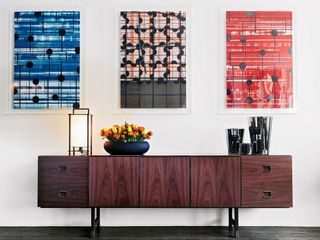
IS THERE A SPACE YOU DREAM OF DESIGNING?
Monique and I are both crazy keen skiers, so a chalet somewhere very remote would be a dream project for us. It would be a true escape to the wilderness with a real connection to the environment – I’d use local, rustic materials with leather and metal (the opposite to the ski chalets made from the wall-to-wall-to-floor pine that I grew up with), but worked in a very contemporary, minimal way, with tall glass doors opening out to the elements.
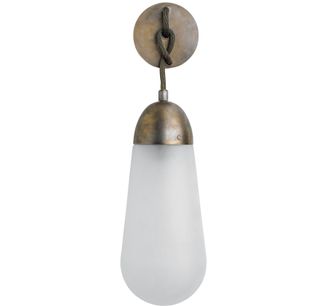
WHEN DO YOU THROW OUT THE RULE BOOK?
Why does the second best room in the house have to be the spare bedroom? How often do people use it? It’s such a waste – work out the ‘heat map’ of where you really spend time in your home, wire rooms for resale and then be selfish. Turn that spare bedroom into a walk-in wardrobe, don’t put the study in the worst room so you end up on the sofa with your laptop instead. Enjoy your home as you want to live now – you’re allowed to dream a little.
For more information, check out tollgard.co.uk
The homes media brand for early adopters, Livingetc shines a spotlight on the now and the next in design, obsessively covering interior trends, color advice, stylish homeware and modern homes. Celebrating the intersection between fashion and interiors. it's the brand that makes and breaks trends and it draws on its network on leading international luminaries to bring you the very best insight and ideas.
-
 Kate Hudson's Wallpaper Plays Into One of the Biggest Trends of 2024 — Experts Say It Brings Both 'Tranquility' and 'Whimsy'
Kate Hudson's Wallpaper Plays Into One of the Biggest Trends of 2024 — Experts Say It Brings Both 'Tranquility' and 'Whimsy'I can't imagine a better backdrop for a viewing of 'How to Lose a Guy in 10 Days' than this (and it's available at Anthropologie!)
By Brigid Kennedy Published
-
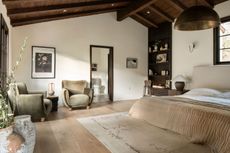 11 Before and After Bedroom Makeovers — You Won't Even Recognize The Transformation!
11 Before and After Bedroom Makeovers — You Won't Even Recognize The Transformation!Our list of seriously inspiring bedroom makeovers that prove it's possible to totally transform any space
By Oonagh Turner Published